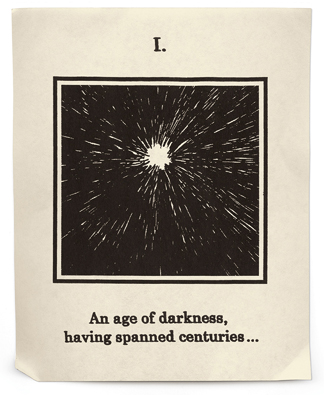[youtube]http://youtu.be/9hUIxyE2Ns8[/youtube]
In 2007 Steve Jobs urca pe scena unei conferinte Apple pentru a prezenta lumii intregi un dispozitiv care avea sa schimbe industria smartphone-urilor, insa ceea ce s-a intamplat in culise a ramas un mister pentru majoritatea persoanelor de pe glob. In cursul zilei de ieri cei de la New York Times au publicat povestea unui fost angajat al celor din Cupertino, acesta vorbind despre lansarea dispozitivului si despre povara care apasa greu pe umerii celor care au trebuit sa pregateasca evenimentul de prezentare. Steve Jobs era unul dintre oamenii carora ii placeau prezentarile live, insa acestea puteau da nastere unor momente neplacute din cauza functionalitatii eronate ale unor echipamente utilizate pentru prezentari, iar in ciuda faptului ca majoritatea companiilor din Sillicon Valley evitau asemenea evenimente, Jobs era ferm convins ca ele trebuie facute.
Grignon and some colleagues would spend the night at a nearby hotel, and around 10 a.m. the following day they — along with the rest of the world — would watch Jobs unveil the first iPhone. But as Grignon drove north, he didn’t feel excited. He felt terrified. Most onstage product demonstrations in Silicon Valley are canned. The thinking goes, why let bad Internet or cellphone connections ruin an otherwise good presentation? But Jobs insisted on live presentations. It was one of the things that made them so captivating. Part of his legend was that noticeable product-demo glitches almost never happened. But for those in the background, like Grignon, few parts of the job caused more stress.
Inginerul care povesteste momentele petrecute in culisele acestei demonstratii publice afirma ca toti cei implicati in ea erau terifiati de Jobs si de efectele pe care le-ar putea avea nefunctionalitatea unor echipamente in timpul evenimentului de prezentare al iPhone-ului. Fostul angajat sustine ca ai sai colegi, prezenti la eveniment, erau atat de stresati incat dupa fiecare segment al conferintei fiecare responsabil pentru acel segment lua cate o gura de scotch pentru a se calma, in cadrul intregii prezentari ei terminand un recipient portabil cu cateva sute de grame de alcool.
By the end, Grignon wasn’t just relieved; he was drunk. He’d brought a flask of Scotch to calm his nerves. “And so there we were in the fifth row or something — engineers, managers, all of us — doing shots of Scotch after every segment of the demo. There were about five or six of us, and after each piece of the demo, the person who was responsible for that portion did a shot. When the finale came — and it worked along with everything before it, we all just drained the flask. It was the best demo any of us had ever seen. And the rest of the day turned out to be just a [expletive] for the entire iPhone team. We just spent the entire rest of the day drinking in the city. It was just a mess, but it was great.”
Partea buna pentru ei a fost ca totul s-a derulat fara vreo problema si Steve Jobs a fost multumit, ei avand ocazia de a sarbatori fara restrictii prezentarea reusita. Totusi, pe langa munca de pregatire a evenimentelor era in spate si un complicat proces de convingere a celor din frunea companiei Apple, acestia crezand ca iPhone-ul va functiona fara probleme daca va avea o carcasa fabricata doar din aluminiu. Fiind concentrati pe design, Steve Jobs si Jony Ive nu au realizat initial ca un smartphone cu o carcasa facuta in totalitate din aluminiu nu se va putea conecta la retelele de telefonie mobila, iar aici a inceput adevarata munca de convingere. Expertii in tehnologiile de telecomunicatii au fost nevoiti sa ii convinga pe Jobs si Ive ca trebuie sa modifice design-ul iPhone-ului, in final terminalul avand o carcasa de plastic la baza pentru a se putea conecta fara probleme la retelele de telefonie mobila, insa chiar si asa a avut probleme destul de mari cu semnalul.
It incorporated a touch-screen and OS X, but it was made entirely of brushed aluminum. Jobs and Jonathan Ive, Apple’s design chief, were exceedingly proud of it. But because neither of them was an expert in the physics of radio waves, they didn’t realize they created a beautiful brick. Radio waves don’t travel through metal well. “I and Rubén Caballero” — Apple’s antenna expert — “had to go up to the boardroom and explain to Steve and Ive that you cannot put radio waves through metal,” says Phil Kearney, an engineer who left Apple in 2008. “And it was not an easy explanation. Most of the designers are artists. The last science class they took was in eighth grade. But they have a lot of power at Apple. So they ask, ‘Why can’t we just make a little seam for the radio waves to escape through?’ And you have to explain to them why you just can’t.”
In concluzie, evenimentele Apple sunt frumoase, interesante si asteptate de zeci de milioane de oameni, dar in spatele lor este enorm de multa munca si enorm de multi angajati stresati.






















